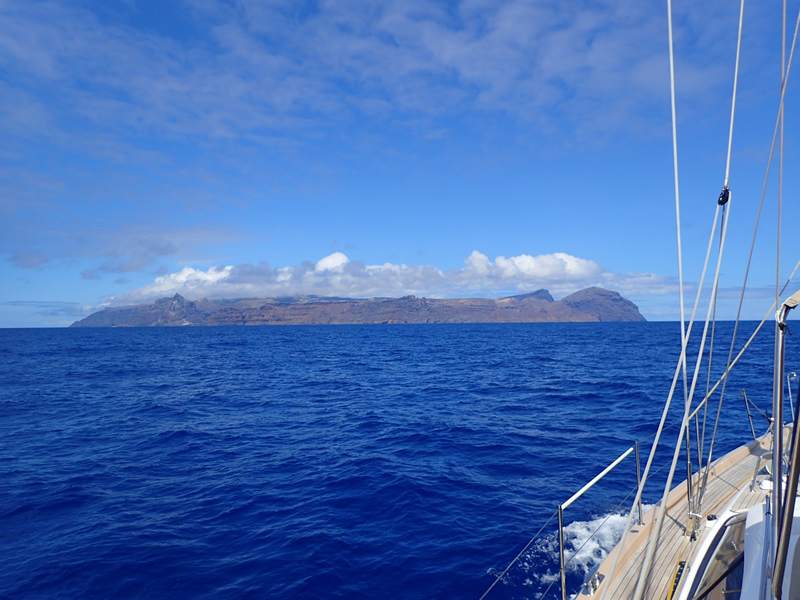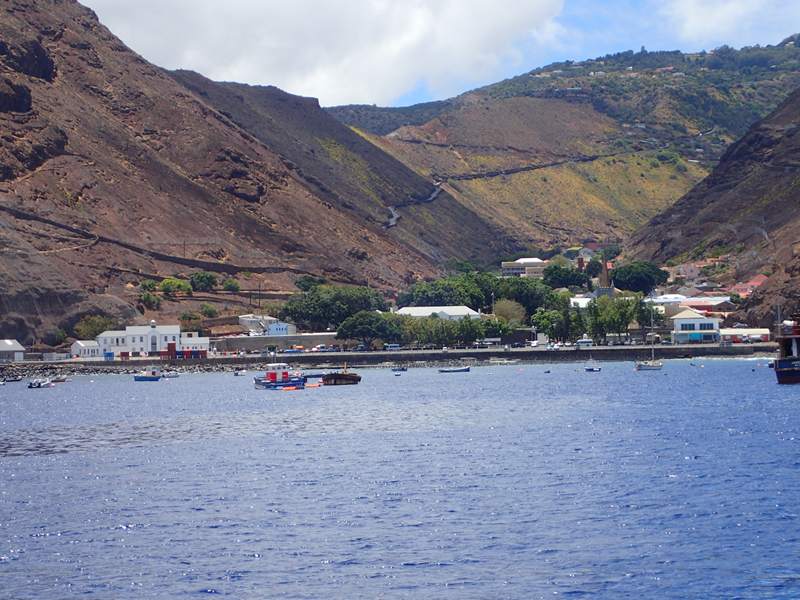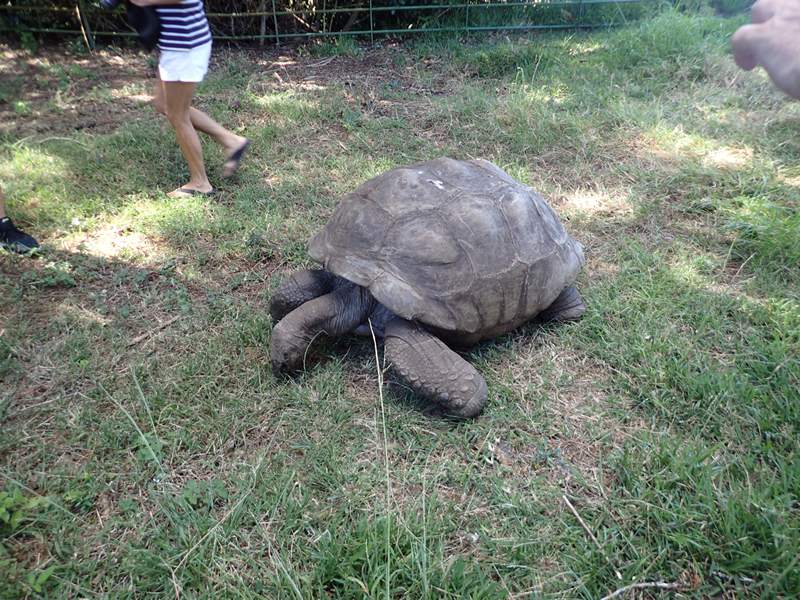Cape Town to St Helena

Safiya
Harvey & Sue Death
Mon 21 Jan 2019 08:43
Blog Cape Town to St Helena
Our sea legs were a bit rusty as we left Cape Town on Saturday 5th January.
Still recovering from the Xmas and New year overindulgence, dry January was
enforced upon us!
Our first three days at sea yielded brisk winds and we made good progress
but come day 4 and the steady trade winds that we had been promised
disappeared and we were left with glassy seas and clear blue skies. Faced
with 5 days of possible motoring, the fleets concern became fuel capacity
and we found ourselves harnessing every bit of available breeze.
The upside of motoring though is a comfortable nights sleep, a flat surface
in the kitchen to cook on and the luxury of eating dinner at a table from a
plate and with a knife and fork rather than the usual bowl and fork! It was
more like being on a transatlantic cruise boat than a sailing boat, without
the 24 hour bar and casino!
It also made fishing a lot easier and we patiently had our fishing rod out
waiting for that elusive bite. We reeled in an juvenile Mahi Mahi but let it
go as it was too small to eat, and then nothing..... Surprisingly the whole
fleet recorded similar results with a number of small Mahi Mahi being caught
but nothing worth eating, maybe the South Atlantic is just all fished
out.....we’ve since learnt that the Chinese bought the fishing rights to St
Helena, which sadly explains the lack of fish.
On day 5 we crossed the Greenwich Meridian marking our return to the Western
Hemisphere after 16 months. Whilst in St Helena we are on exactly the same
time zone as the UK. We’ve also been travelling North back towards the
Equator and the difference in temperature over the course of the passage has
been remarkable. On the first night watch I was dressed up Michelin man
style, bundled up in layers. By the last night I wore shorts and T shirt and
the day time temperature was well in the 30’s.
At first light St Helena loomed in the distance, shrouded in cumulus cloud
it looked very forbidding, a wall of volcanic rock. As we rounded the north
of the island we could see Jamestown, the capital nestled in a valley
enclosed on three sides by sheer rock. Jamestown is St Helena’s first and
only port of call.
The island is just 47 square miles ( a third of the size of the Isle of
White) with a population of just 4000 people. As you would expect in a
community of that size everybody knows each other and most people are
related! The locals who are known as Saints are a curious mixture of British
from the early settlers, and from the slaves that were shipped in; African,
Indian and Chinese. The National language is English but with a very strong
accent that makes it almost impossible to understand when spoken fast
especially by some of the older residents. Its the second oldest British
Overseas Territory (after Bermuda) and in 1815 Napoleon Bonaparte was exiled
here after he lost the battle of Waterloo. He arrived with his entourage of
26 people and was incarcerated in Longwood House which was used by the
lieutenant governor as a summer residence. We had a tour of the house which
still has some of the original furniture in it. We also visited Napoleons
tomb, he died in 1821 on the island and was buried there. His body was
returned to France in 1840 but the tomb remains.
We’ve had a really interesting week in St Helena, it’s been like going back
in time. The island pace of life is slow and measured, and the people are
genuinely welcoming and friendly. There is very little wifi, no phone
signal, no ATM’s and most transactions are carried out in cash. Apart from a
few locally grown vegetables all food is imported and there is no industry
on the island. The average weekly wage is £60 and there is high
unemployment. Up until 2 years ago the only way to arrive at the island was
by sea but with a cash injection from the British government of £230 million
the airport was opened in 2016, in the hope that it would bring in tourists
and stimulate the economy. Unfortunately because of the cross winds, large
transatlantic planes can’t land here and currently there are just 2 flights
a week from Johannesburg which is not exactly bringing in the thousands of
tourists per year that the government were hoping for.
One of the big draws to the island at this time of year is the appearance of
whale shark, they congregate around the waters of St Helena to give birth.
These gentle giants are not dangerous to humans, despite their huge mouths
they are filter feeders sifting plankton and fish eggs from the sea water.
We were lucky enough to snorkel with a whale shark, measuring about 7 metres
in length, it was a truly incredible experience.
We’ve seen the best that the island has to offer, with an island tour and a
visit to the Worlds most remote distillery. We sampled rum and gin made from
juniper berries that grow wild on the island. We also had a private tour of
Plantation house, the official residence of St Helena’s Governor for over
200 years, it is a beautiful Georgian structure with a huge lawn at the
front which overlooks the ocean. Roaming the lawn are 4 giant tortoises,
gifts from the government of the Seychelles. The oldest tortoise named
Jonathon is nearly 200 years old and reputedly the oldest Aldabra tortoise
in the world.
The lack of tourists means that St Helena is very unspoilt and quaint, the
downside is the lack of facilities. With just a handful of restaurant and
bars and a couple of hotels there isn’t a great choice of places to eat out.
Grocery shopping is also reminiscent of war time Britain, with major
shortages of certain foods especially fresh fruit. Luckily we arrived at the
same time as the supply boat which comes every 3 weeks and we managed to
secure some fresh fruit and veggies.
All in all we’ve had a fantastic stay in St Helena, the island and the
people are very special and have made us feel very welcome.
We are leaving on Monday, next stop is the island of Fernando de Noronho on
the NE coast of Brazil with a possible stop over on the way at Ascension
Island.







